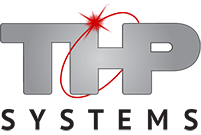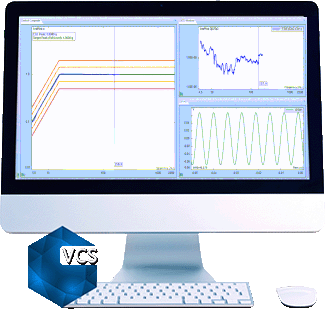Product Overview
The RSTD feature occurs in two phases. First, resonant frequencies are detected using a swept sine test measuring the FRF across the control and monitor channels. Multiple FRFs are supported to help detect different sets of resonant frequencies.
Afterwards, dwell entries are defined for the relevant resonance frequencies. Tracking (by amplitude or phase) is supported to follow the changes of the resonant frequency as the test progresses.
Learn MoreKey Features
- Resonant Frequency Search: Uses Q or amplitude of transmissibility to automatically search the resonances within a certain range.
- Tracked Dwell: Resonant frequencies are manually entered or loaded from the search table. Dwelling continues until the time duration is reached, resonant frequency changes out of limits, or amplitude changes out of limits. The “tracked dwell” entry must be added to the schedule.
- Phase Tracked Dwell: Resonant frequencies are manually entered or loaded from the search table. Dwelling continues until time duration is reached or resonant phase changes out of limits. The “Phase Tracked Dwell” entry must be added to the schedule. Users can pre-configure the control level while tracking phase changes.
- Vibration Visualization: The EDM Vibration Visualization feature is available in EDM VCS software all test types, including MIMO VCS. This option provides fast and efficient structural model generation and full 3D visualization of the online vibration pattern on the structure under test.
- Multiple instances of EDM VCS can run simultaneously on the same computer. Each instance connects a Spider system to run the vibration controller software. All instances must run different tests. This feature provides a central place to control multiple Spider systems and perform vibration tests separately.
- Black Box Mode: Operating Without a PC
A supported front-end can operate in Black Box mode which allows it to perform a test without a connected PC. In this mode, a PC is used only to configure the system before the test and then to download the data after the test is complete. - Multi-shaker control (MSC) is a unique feature offered enables users to view and monitor multiple shaker tests from one PC station. Up to 12 controllers can be accessed simultaneously.
Test Parameters in Resonant Search and Dwell Tests
- Frequency sets the frequency to dwell at.
- Level(%) sets the amplitude of the control, relative to the swept sine profile.
- Tracking(%) limits the maximum range of frequency, which is dependent on a percentage of the dwell frequency, over which a resonance frequency will be tracked.
- Stop Dwelling Conditions: During the dwell, the resonance and its properties such as amplitude and Q are tracked.
- Dwell Time: This value defines the duration of dwell at the resonant frequency.
- Dwell Sine Cycle: This is parameter similar to Dwell time but in terms of sine cycles.
- Resonance Frequency changing by amount/percentage/rate: If a resonance is found to have moved by amount larger than specified by these parameters, then the test would stop dwelling at the current frequency.
- Amplitude Ratio changing by amount: If resonance is found to have amplitude that has changed by a ratio greater than the specified condition, then the test would stop dwelling at current frequency.
- Simple Tracking enables periodic tracking instead of continuous tracking of resonance movement.
- Advanced Tracking ensures that program constantly monitors the resonance frequency and any shift in the resonance frequency will call for tracking again to find new resonance value.
- Tracking Sensitivity: This parameter is only available for advanced tracking and it gives the user flexibility to adjust the test as per the requirement of the test objects.
Continuous Data Recording
During vibration control, all measurement input and drive signals can continuously record to a Spider-NAS or the internal storage residing in each front-end. Users can view and analyze data files with Crystal Instruments Post Analyzer. The variable sampling rate can be enabled to simultaneously record slow-change signals together with high speed vibration data.
Available Options
For further information on options available for this Product, please contact our specialist sales team on:
+44 (0) 1462 481859 or
Resources
Request Quote
Please select the form below relevant to your enquiry:
Notching and Limiting
Limiting is applied to control or monitor channels. Three types of limiting are available in Sine Control: frequency domain, time domain, and advanced limit. Two types of limiting are available in Multi-sine control: frequency domain and time domain.
Frequency domain limiting is spectrum limiting. Limit types are notching limit, abort limit, and alarm limit. Time domain limiting compares raw data or the RMS value of input channels to the high limit. The occurrence of exceeding the high limit is one of the system events to which desirable actions can be added. Advanced limit includes summed channel notching and vector notching.
A summed virtual channel is defined as the weighted average of raw time stream signals from multiple input channels. The Notch profile of a summed channel is defined in the frequency domain.
A vector RRS signal is defined as the vector sum of raw time stream signals from three input channels. The notch profile of a vector RRS signal is defined in the frequency domain as well.
Supports up to 128 notching/limiting channels out of 512 input channels.
Hardware
A Spider system can consist of one or more Spider hardware front-ends. The user constructs the system by combining Spider front-ends detected on the same LAN. The software validates and displays hardware attributes of each Spider front-end. The following hardware is supported by EDM VCS software for vibration control, monitoring, and data acquisition.
- Spider-81 Premium Vibration Controller
- Spider-81B Basic Vibration Controller
- Spider-80X High Channel Vibration Controller – Scale up to 512 Channels
- Spider-80Xi High Channel Vibration Controller – Compact, handheld high channel system
- Spider-80M MIMO Vibration Control System
- Spider-80SG General Data Acquisition Device with Strain Measurement
Software
- Swept Sine Vibration Control
- Multi-Sine Vibration Control
- Total Harmonic Distortion (THD) Measurement for Sine for Vibration Testing
- Sine Oscillator
Monitoring Through EDM Cloud
All tests in EDM-VCS support status checks through EDM Cloud. With EDM Cloud support, users can set up any VCS test to upload live data or run logs for completed tests to a cloud storage space provided by Crystal Instruments, where data is securely stored in the user’s account.
The EDM Cloud website is located at https://cloud.go-ci.com. Users can access EDM Cloud from anywhere in the world to check the status of past and current tests. A secure login flow ensures the status can only be checked by authorized personnel with proper credentials. Multiple logins for accessing the same Cloud account is available.



 VCS Brochure
VCS Brochure